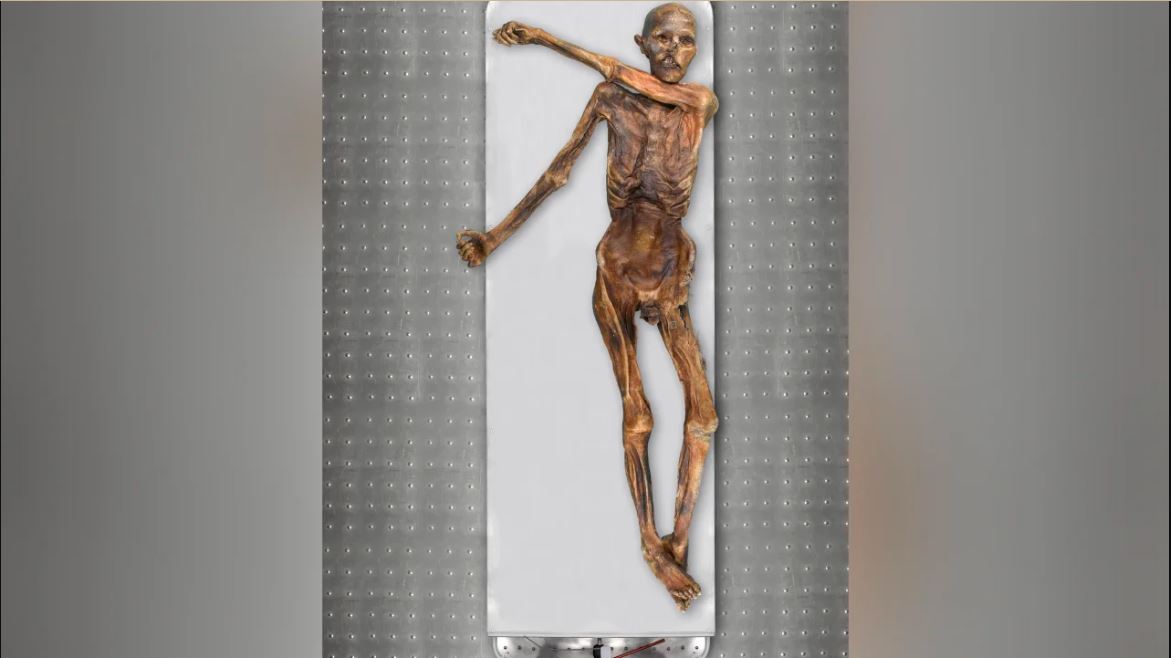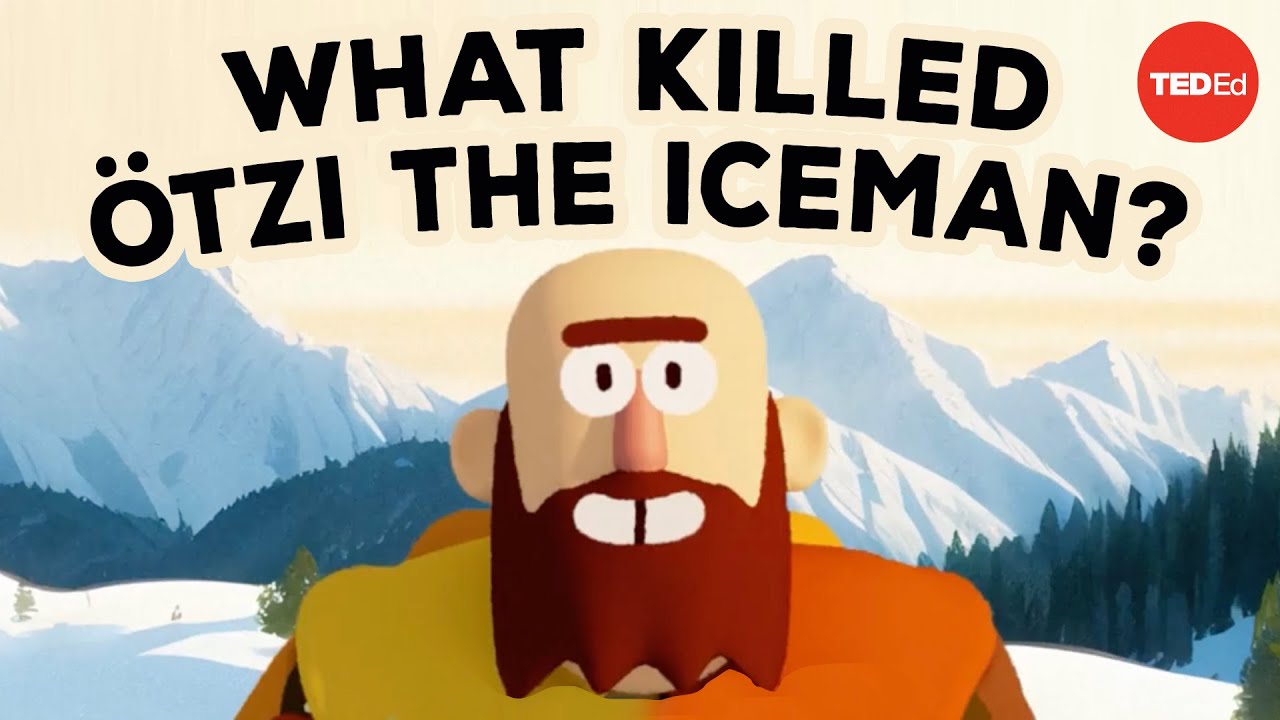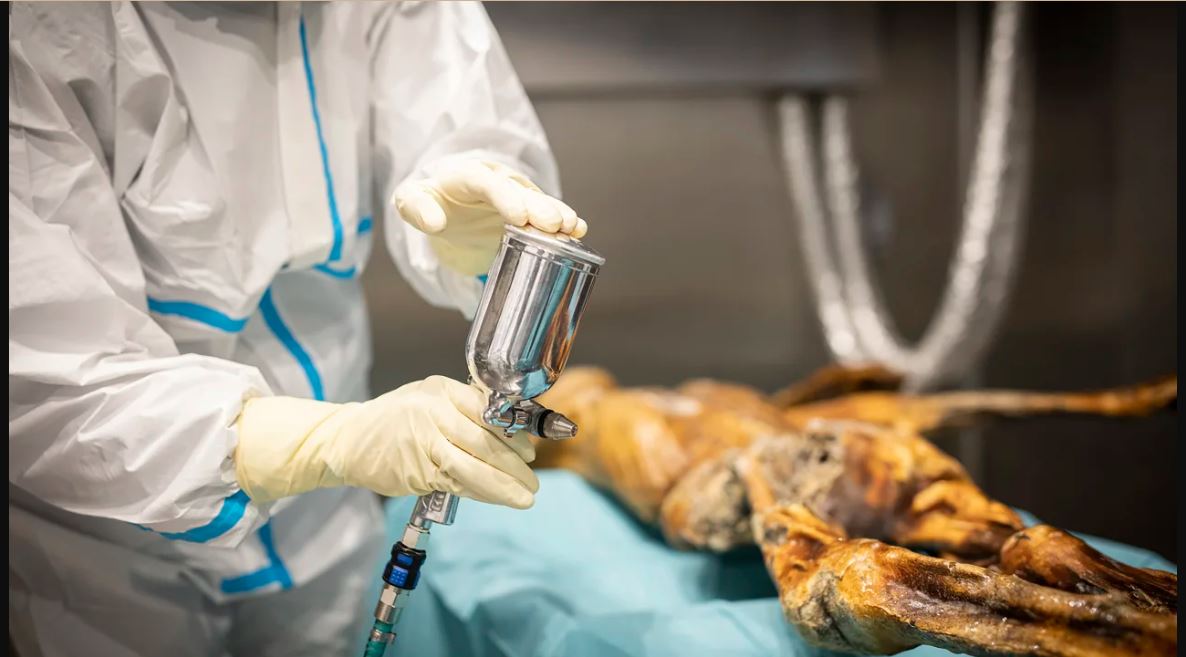New DNA Analysis Unveils Accurate Appearance Of Ötzi The Iceman
New DNA analysis unveils accurate appearance of Ötzi The Iceman. Ötzi the Iceman, discovered in the Tyrolean Alps in 1991 by hikers, remains one of the most extensively examined cadavers globally.
Author:Paolo ReynaReviewer:Hajra ShannonAug 18, 2023141.5K Shares1.9M Views

New DNA analysis unveils accurate appearance of Ötzi The Iceman. Ötzi the Iceman, discovered in the Tyrolean Alps in 1991 by hikers, remains one of the most extensively examined cadavers globally.

A 5,300-year-old murder mystery - Albert Zink
The enigma surrounding his untimely demise, identity, and mountainous resting place has captivated not only archaeologists but a much broader audience. Annually, numerous individuals flock to the South Tyrol Museum of Archaeology in Bolzano, Italy, to view his well-preserved body, stored in a specially designed cold enclosure.
A fresh examination of ancient DNA extracted from Ötzi's pelvis implies that he holds further undisclosed secrets. The scrutiny of his genetic composition has disclosed intriguing details about the 5,300-year-old mummy: he possessed dark skin, and dark eyes, and was likely devoid of hair. This revelation stands in stark contrast to previous depictions of Ötzi, which portrayed him as fair-skinned, with a lush mane of hair and a beard.
"It was previously believed that his skin has darkened during the mummification process," said Albert Zink, head of the Institute for Mummy Studies at Eurac Research, a private research center based in Bolzano.
“It seems that the dark skin color of the mummy is quite close to the Iceman’s skin color during (his)lifetime,” said Zink, who is a co-author of the research published Wednesday in the scientific journal Cell Genomics.
Zink, communicating via email, expressed that the revelation of Ötzi's dark skin isn't overly astonishing. He pointed out that during that era, numerous Europeans probably possessed darker skin pigmentation compared to many Europeans of today.
"Early European farmers still had a quite dark skin, that changed with time to a lighter skin, as an adaption to the changes in climate and diet of the farmers. Farmers consume much less vitamin D in their diet compared to hunter-gatherers," he explained.
"It seems that the Iceman still consumed quite a lot of meat, that was also confirmed by our analysis of his stomach showing the presence of ibex and deer meat," he added.
Johannes Krause, Zink's coauthor and head of the department of archaeogenetics at the Max Planck Institute for Evolutionary Anthropology in Leipzig, Germany, indicated that the outcomes of the study implied that Ötzi during his lifetime bore a much stronger resemblance to the mummified figure we see today.
“It is remarkable how the reconstruction is biased by our own preconception of a Stone Age human from Europe,” Krause said in a statement.
Although the analysis of ancient DNA hinted at the presence of male pattern baldness in Ötzi, it remains uncertain to what degree he experienced hair loss during his life, as stated by archaeologist Lars Holger Pilø. Pilø, a co-director of the Secrets of the Ice project in Norway, has extensively examined Ötzi, but his involvement was not part of the recent research effort.
“Ötzi may well have been balding for genetic reasons, but the near complete baldness he has now is in my opinion more likely due to have happened after his death,” Pilø said.
“The hairs on skin will often fall out during the (body’s) stay in andoutside the ice (and sometimes in water) as the epidermis decomposes.”
Genome Provides Enhanced Accuracy Information
The genome derived from DNA extracted from Ötzi's pelvis exhibited a higher level of completeness compared to a prior genome assembled in 2012 during the early stages of ancient DNA research, as outlined in the study. Moreover, the recent investigation has contributed to resolving an ancestral puzzle concerning Ötzi, as highlighted by Pilø.
"The application of new methods makes Ötzi a scientific gift that just keeps on giving," Pilø added.
The study conducted in 2012 unveiled traces within his genome that appeared to originate from steppe people, also referred to as Yamnaya, a group that only migrated to Europe centuries following Ötzi's demise. However, the recent study suggests that this initial finding likely resulted from the contamination of his DNA by modern human genetic material.
"The advancement in sequencing technologies allowed us to generate a high coverage genome of the Iceman. This allowed us to obtain more accurate results," Zink said.
Upon conducting a comparative analysis of Ötzi's genome with those of other ancient human populations, the researchers in the recent study discovered a closer genetic resemblance between Ötzi and early Anatolian farmers, hailing from what is now Turkey. Importantly, these Anatolian farmers had minimal interactions with the European hunter-gatherer communities contemporary to Ötzi.
"It does not completely change our knowledge about the Iceman but makes some things clearer," Zink explained. "It shows that the Iceman most likely lived in a relatively isolated area with only limited contact to other populations and low gene flow from hunter-gatherer-ancestry-related populations."
Virtually every aspect of Ötzi and his possessions has undergone meticulous examination, creating a vivid portrayal of existence over 5,300 years ago. The examination of stomach contents provided insights into his final meal and geographic origins, while scrutiny of his weaponry indicated his right-handedness. His attire offered a unique glimpse into the attire worn by people of that ancient era. Zink expressed the team's aspiration to unearth additional specifics, including details about his microbiome composition.
This isn't the initial instance where a segment of Ötzi's captivating narrative has undergone revision, Pilø noted. Initially, the belief was that Ötzi succumbed to freezing temperatures.
However, in 2001, an X-ray disclosed an arrowhead lodged in his shoulder, indicating a potentially fatal wound. Additionally, signs of a head injury, potentially incurred concurrently, and a defensive wound on his right hand further complicate his story.
"The whole story of the Iceman is intriguing, including the mystery of his violent death, and the question why he was up there in the high mountains when he was killed," Zink said.

Paolo Reyna
Author
Paolo Reyna is a writer and storyteller with a wide range of interests. He graduated from New York University with a Bachelor of Arts in Journalism and Media Studies.
Paolo enjoys writing about celebrity culture, gaming, visual arts, and events. He has a keen eye for trends in popular culture and an enthusiasm for exploring new ideas. Paolo's writing aims to inform and entertain while providing fresh perspectives on the topics that interest him most.
In his free time, he loves to travel, watch films, read books, and socialize with friends.

Hajra Shannon
Reviewer
Hajra Shannona is a highly experienced journalist with over 9 years of expertise in news writing, investigative reporting, and political analysis.
She holds a Bachelor's degree in Journalism from Columbia University and has contributed to reputable publications focusing on global affairs, human rights, and environmental sustainability.
Hajra's authoritative voice and trustworthy reporting reflect her commitment to delivering insightful news content.
Beyond journalism, she enjoys exploring new cultures through travel and pursuing outdoor photography
Latest Articles
Popular Articles

